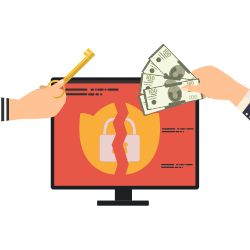EXPLORING MALWARE ANALYSIS: ITS GOALS AND TYPES
GOALS OF MALWARE ANALYSIS
 Before using a malware analysis tool, a goal must be set. With regards to battling malware, you might question yourself as a security professional—”for what reason would I have to perform malware analysis?” If an organization is in charge of the security of its network, it will need to perform malware analysis. Malware is getting to be target specific towards financial gain. More malware is in the wild. It has less chance of anti-malware or anti-virus applications identifying the malware. The goal of malware analysis is to gain a comprehension of how a particular bit of malware works. This is necessary to build a barrier to secure an organization’s network. There are two key inquiries that need answers. The main: how did the machine become tainted with this bit of malware? The second: what does this malware do? Determine the particular type of malware. You should figure out which question is more critical to your situation. Since you have decided your goal, it is time to talk about the two common types of malware analysis.
Before using a malware analysis tool, a goal must be set. With regards to battling malware, you might question yourself as a security professional—”for what reason would I have to perform malware analysis?” If an organization is in charge of the security of its network, it will need to perform malware analysis. Malware is getting to be target specific towards financial gain. More malware is in the wild. It has less chance of anti-malware or anti-virus applications identifying the malware. The goal of malware analysis is to gain a comprehension of how a particular bit of malware works. This is necessary to build a barrier to secure an organization’s network. There are two key inquiries that need answers. The main: how did the machine become tainted with this bit of malware? The second: what does this malware do? Determine the particular type of malware. You should figure out which question is more critical to your situation. Since you have decided your goal, it is time to talk about the two common types of malware analysis.
TYPES OF MALWARE ANALYSIS
There are two types of malware analysis that security experts perform. These are static malware analysis and dynamic malware analysis. The two sorts of malware analysis achieve a similar goal. But, the abilities and tools required are different. Static analysis is the actual review of code and walking through it. Dynamic analysis is the means by which the malware carries on when executed. Also, what gets installed, to whom it converses with, and how it runs. When performing malware analysis, both static and dynamic malware analyses should be performed. This is to gain a total understanding of how specific malware functions. Malware functions take into consideration better defenses to shield the organization. The organization must know about the laws about reverse code engineering. Before attempting reversing, check the local country laws about reverse code engineering.
Static Malware Analysis Static malware analysis is performed by looking at the software code of the malware. This is to gain a better comprehension of how the malware functions. While performing static malware analysis, antivirus software will run on the malware. Files such as shell scripts will be examined. Most likely, reverse engineering should be performed using programs. Examples are debuggers, disassemblers, and decompilers. After reversing malware, the IT team will be able to see how the source code of the malware functions. Seeing how the code functions allow the IT team to fabricate better safeguards. They will also serve as a sanity check on the finished dynamic malware analysis. Malware today is becoming more focused on. Seeing how malware infects systems can diminish infections to an organization. In this way, it decreases the general expense.
Dynamic Malware Analysis Dynamic malware analysis is a quick method of malware analysis. When performing dynamic malware analysis, look at how the malware carries on. Check on what changes the malware makes for a baseline system. It is basic that the malware lab isn’t associated with another network. Files must be transferred utilizing a read-only medium. There are changes in the system that should raise a warning. It includes files that have been altered or included. Check for new services that have been installed. If any system settings have been adjusted, and new processes that are running. This would incorporate DNS server settings of the workstation which have been changed. Besides the behavior of the system itself, network traffic will likewise be analyzed. We know of what behavior the malware does to networks. The IT team will see how the malware performs these activities. The responses to that question need the IT team to perform a malware analysis. No record gets away from the consideration of the Xcitium Forensic Analysis tool. The unknown files are dispatched to a cloud-based analysis. These represent the most certified dangers. Also, get Xcitium’s All-In-One Advanced Endpoint Protection with Default Deny Platform Malware Protection. It is unlike most endpoint solutions that rely upon a blacklist to block known bad files. It stops unknown files to continue running on your endpoints. Xcitium Advanced Endpoint Protection runs unknown file in a lightweight virtual container. They can be analyzed and used for a decision of either bad or good. Xcitium Advanced Endpoint protection software ensures over 80+ Million endpoints over the world. You can recoup your organization! Just complete the Xcitium Forensic Analysis and Xcitium Advanced Endpoint protection programming. Download at https://enterprise.xcitium.com/ Start your malware discovery using Xcitium Forensic Analysis now. GET FREE TRIAL NOW! Website Malware Scanner




